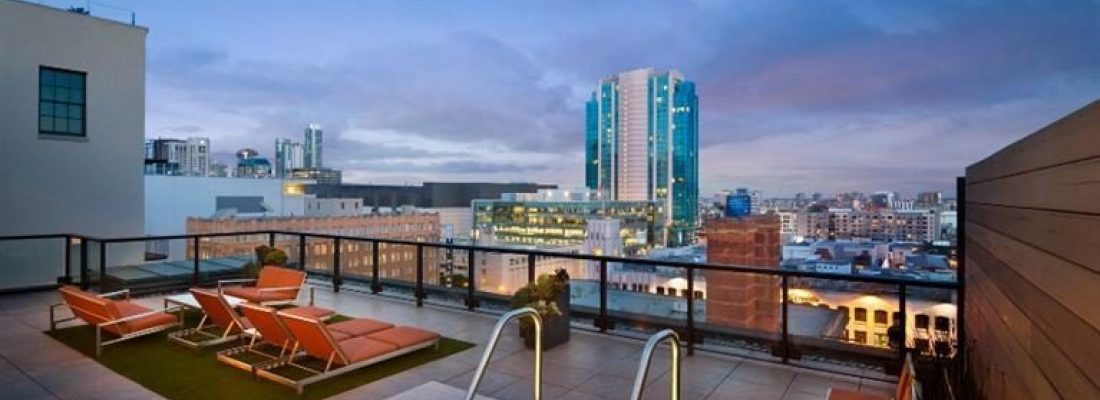Potrero Hill

On Potrero Hill, you can relax in brilliant sunshine while watching fog engulf the rest of the city. Bounded roughly by 16th, Third, and Cesar Chavez streets and Potrero Avenue, the neighborhood is relatively sequestered by freeways and large tracts of the industrial terrain. Potrero Hill is in the Southern part of San Francisco, a beautiful location sheltered from the city's famous fog. The fog lifts over Potrero Hill before most of the rest of San Francisco, and daytime walks are one of its great attractions. Yet, nighttime is a separate story; besides nightclubs and around 18th Street's restaurants and cafés, Potrero Hill can get deserted in a hurry, and you should take care in deciding where to go for an evening stroll.
The area was developed for more than decades. Its architecture ranges from cottages to Victorians to modern condos. New office construction continues on the north side, while condos rise on the hill's eastern and southern edges, particularly in Dogpatch which is the name given to the Third Street corridor between 16th and Cesar Chavez. Largely zoned for heavy industrial use, Dogpatch doesn't have much going on past quitting time. Many homes in Potrero Hill have views of the downtown skyline, the Bay, or Twin Peaks.
While families lived on the hill, flatland manufacturing by firms like U.S. Steel, the Union Iron Works, the Western Sugar Refinery, Bethlehem Shipbuilding Co., and American Can Co., among others, ensured that the area remained largely industrial through most of the 20th century. But a combination of deindustrialization and the late-1990s Internet boom began driving the conversion of factories and warehouses into housing or offices.
Potrero Hill's primary shopping drag is on 18th Street, between Connecticut and Texas streets, along which you'll see fewer strollers -- and fewer weirder dogs -- than in already-gentrified neighborhoods like the Inner Sunset and Noe Valley. In spite of increasing yuppiness, 18th Street remains come-as-you-are.
The hill is also where O.J. Simpson grew up, and as a result, even though Simpson never visited the area much after becoming famous, the hill has the nation's densest remaining concentration of O.J. Simpson murals. One, on Connecticut at 17th Street, shows the former football great in his uniform, with later spray-painted details like blue devil horns. The other is at the Potrero Hill Recreation Center (see below).
The residential streets are unusually clean for San Francisco, and every house seems to have a small garden, flower box, or tree planted out front. This tradition goes back ways; witness a September 1963 Sunset magazine article in which Hill denizens, clad in jeans and Jackie Kennedy clam-diggers, landscape the twistiest stretch of Vermont Street. They hope against hope that the growing leptosporum will "one day hide the nearby freeway and its eight lanes of around-the-clock traffic." The city donated irrigation water, a neighborhood group coughed up labor and cash for two new water meters and someone threaded all the irrigation pipes in his own machine shop -- evidence of a level of neighborly cooperation that continues today.
New office construction continues on the north side, while condos rise on the hill's eastern and southern edges, particularly in Dogpatch, the name given to the Third Street corridor between 16th and Cesar Chavez. Largely zoned for heavy industrial use, Dogpatch doesn't have much going on past quitting time.
20th Street is lined with mom-and-pop businesses. McKinley Park which is also located on the 20th Street and Vermont is a small neighborhood park that was also recently renovated and improved and has a playground, grassy areas, walking paths, and great views west and south.


